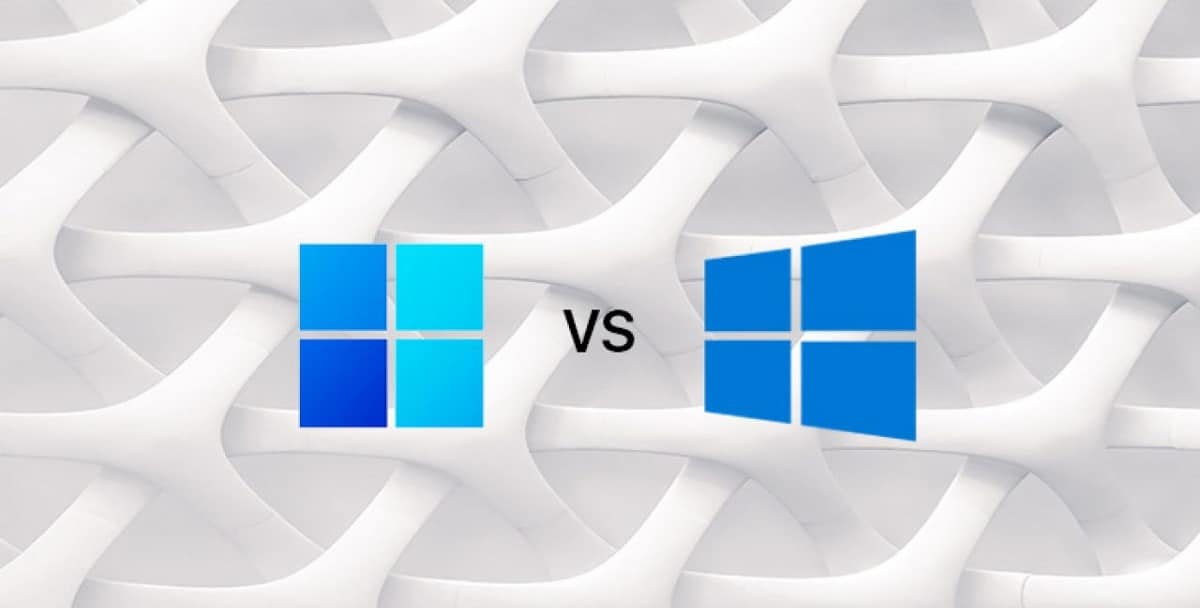
The new version of Microsoft's operating system is here and it is inevitable that users will ask themselves the question: Windows 10 vs. Windows 11. What are the differences between them? Is the new version really better or are there negative aspects that we should know about?
From the outset, it must be said that Windows 11 comes with a new user interface, an improved application distribution, and more additions focused on the issue of security. In addition, this latest version of the operating system offers many improvements to the application and several very interesting features for gamers.
Windows 11 was officially released just a few days ago, on October 5, 2021. It came as a free update via Windows Update Windows 10 for computers that meet certain supported technical specifications.
It is curious to see how Microsoft has broken its word, since when it launched Windows 10 it solemnly announced that it was going to be the last version of Windows. We already see that it has not been so.
Compatibility and requirements

Windows 11 compatibility requirements
But before thinking about make the leap from Windows 10 to Windows 11, the first thing we will have to do is check that our equipment is compatible with the new version. Microsoft has designed a specific tool for this task: Windows PC HealthCheck. To use it, you must first register as a member of Windows Insider.
The truth is that the requirements for installing Windows 11 they are relatively demanding on our computer. They are as follows:
- CPU: 1 GHz or more, 2 cores or more, and compatible 64-bit processor.
- Storage: 64 GB or higher.
- RAM: minimum 4GB.
- Screen: 720 inch 9p screen.
- Firmware: UEFI, Secure Boot Capability.
- TPM: Trusted Platform Module 2.0
- Graphics card: DirectX 12 compatible with WDDM 2.0 driver
Broadly speaking, they are the same requirements as for Windows 1st, except for the TPM chip. Some users may have trouble running the update because of this device.
In any case, Microsoft has made it very clear that the installation of Windows 11 will not be allowed on devices that do not meet the required hardware requirements. All for safety, they say.
Windows 10 vs Windows 11: similarities
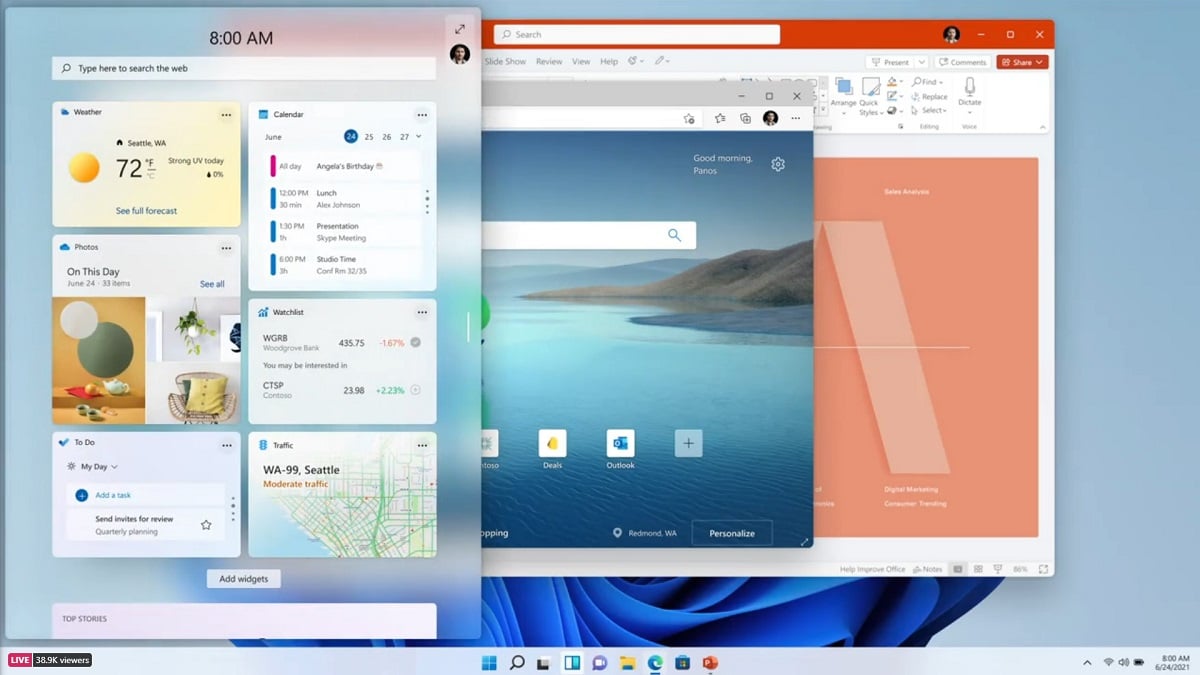
The interface of Windows 11 does not present major changes with respect to that of Windows 10
Windows 11 is not here to star in a breakthrough or an operating system revolution. On the contrary, it could be said that it is a bet for continuity: almost all the applications that we use in Windows 10 will be able to continue being used in Windows 11 without problems.
Anyone who installs the new version on their computer (after meeting the necessary requirements) will have no major difficulty navigating the new interface. The window system is the same, and the menus are easy to find. Obviously the aesthetic is something different, but the changes are not radical.
The image above, a screenshot from Windows 11, perfectly illustrates this. Aesthetic and structural continuity. Everything that we can find in Windows 10 will also be available in Windows 11.
Windosws 10 vs Windows 11: differences
But the most interesting thing about Windows 11 is the new elements it incorporates, which we are going to review in detail below:
New Design
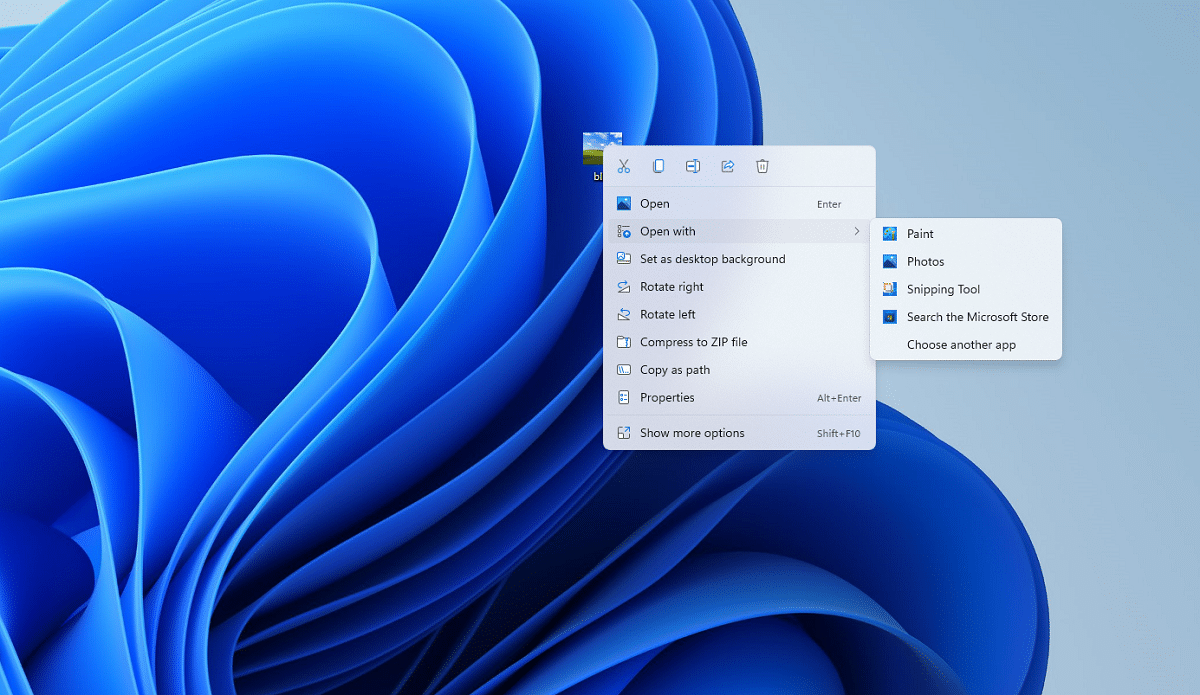
Rounder windows and other Windows 11 design changes
We have already said that the interface is easy to recognize, as it does not deviate from the parameters of the previous version. Nevertheless, Microsoft has renewed the appearance of all windows, more rounded and beautiful.
Exactly the same can be said about the context menu and the File Explorer. The latter now offers a much cleaner look than before, with the most common commands available in the new toolbar. The result of this is that Windows 11's File Explorer looks a lot neater now. Besides that, it also offers a set of new icons available.
More changes: the taskbar is now centered (It looks a bit like macOS), while the start menu also features rounded corners, offering fewer visible options. To find all the applications you have to go to a specific section, well hidden from view behind the button "All applications". On the other hand, the new Start menu is minimalist, much more concise than Windows 10.
Widget panel
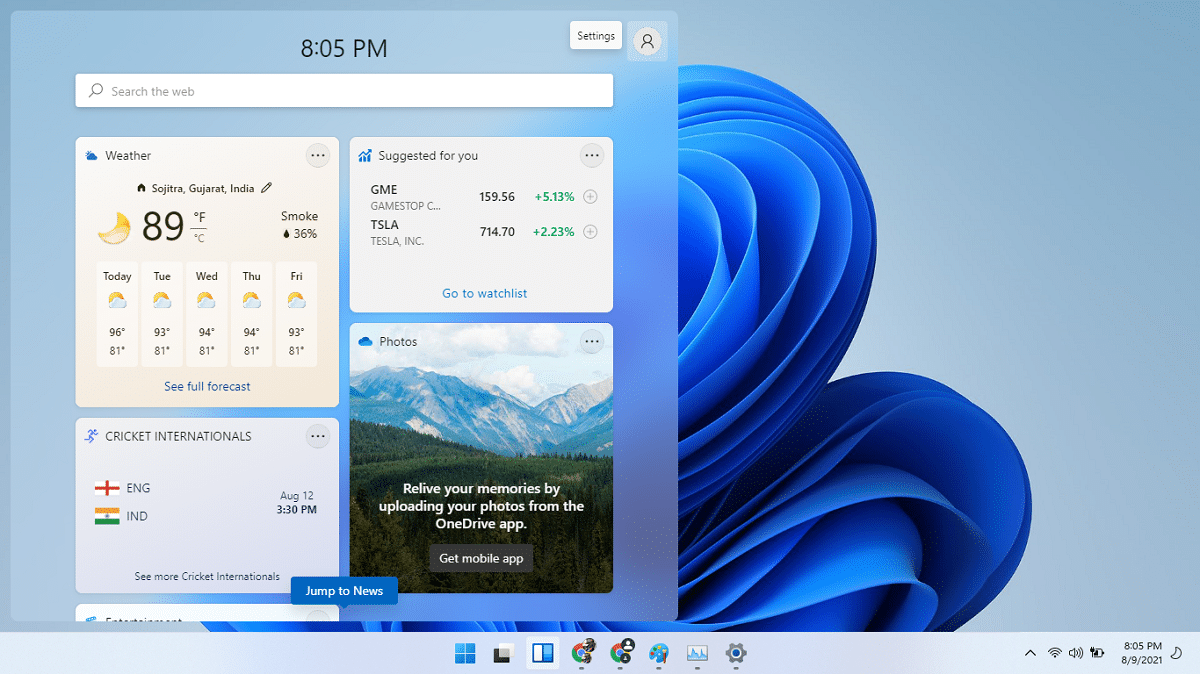
The new Windows 11 widget panel
One of the most important changes that Windows 11 has introduced is the Live Tiles withdrawal. But there is no problem, because in return it has incorporated a series of widgets they do the same job. Of course, we will not find them in the Start menu, since they have their own panel.
In this way, through the widget panel We can add, move or disable widgets in Windows 11 in the simplest way.
Improvements in the multitasking area
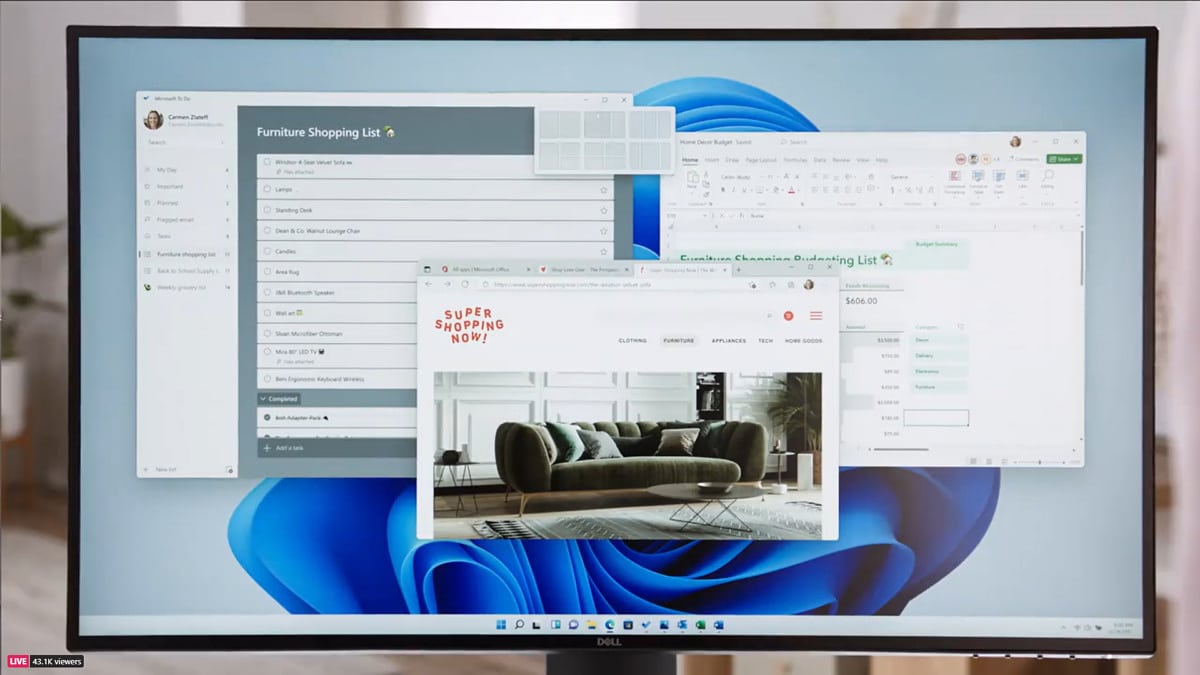
Snap designs to work with multiple applications at the same time
The snap designs Windows 11 take to a new level the way of working with different windows open on the screen of our computers. With this feature, you can choose from 6 available layouts to better organize your open applications. In addition, Windows 11 will memorize which applications are open so that you can easily return to that layout at any time.
Simply place the cursor over the application on the taskbar and we can choose the Snap design associated with it and restore it along with all the applications we were working with.
The virtual desktops they have also been improved. For example, now they allow us to customize the background of each of them. And if we work with external monitors, another very interesting feature: Windows 11 will now memorize the windows and restore them automatically when we connect our PC to an external monitor. So we can continue at the same point where we left off.
Enhanced touch screen function
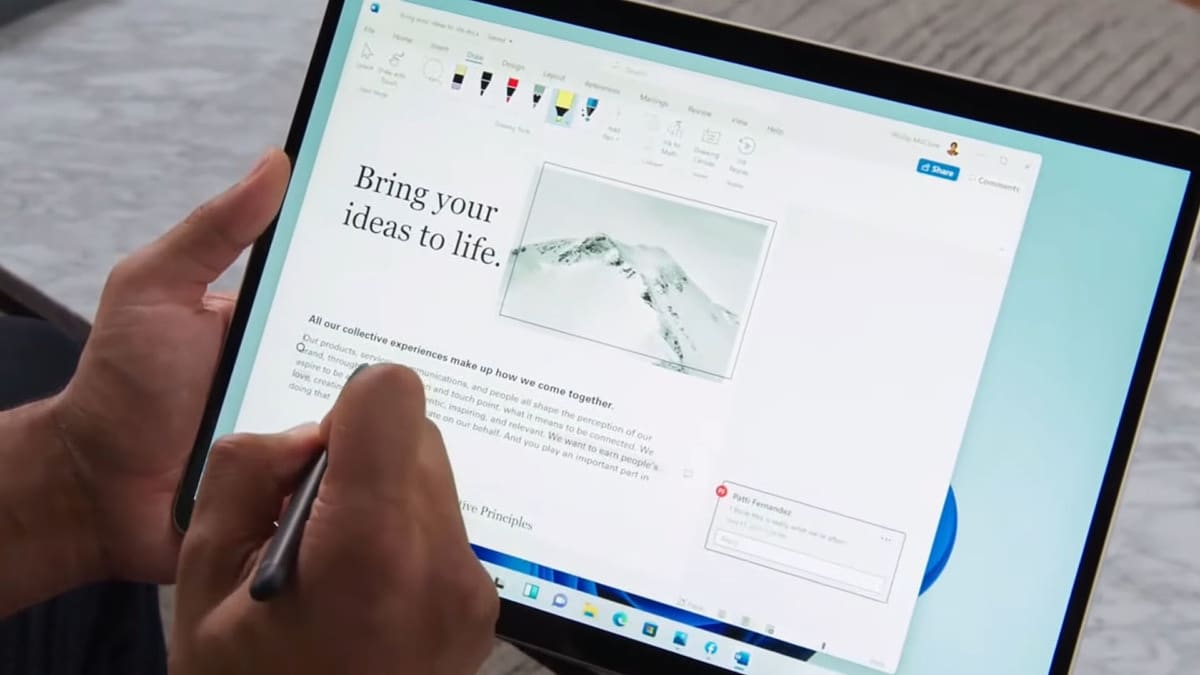
Windows 11 touchscreen enhancements
Windows 11 focuses heavily on the functionality of the touch screen. Using this mode, the home menu disappears and the icons are enlarged. That is, they are easier to play.
For easier navigation, some are added new touch gestures that allow us to easily switch to the last application used, return to the desktop or restore the application's open windows. We can also open the Task View with gestures and switch between application windows and virtual desktops.
El touch keyboard It has better customization, with many themes to choose from. Ink input has also been improved. Now incorporates a "Pencil menu" in the task bar that allows us to quickly start applications. Furthermore, these pens They have haptic feedback, so we can feel the vibrations while we use them. A realistic touch.
Finally, it is worth highlighting the inclusion of a voice input support. With it you can enter any text simply using the microphone.
Android app integration
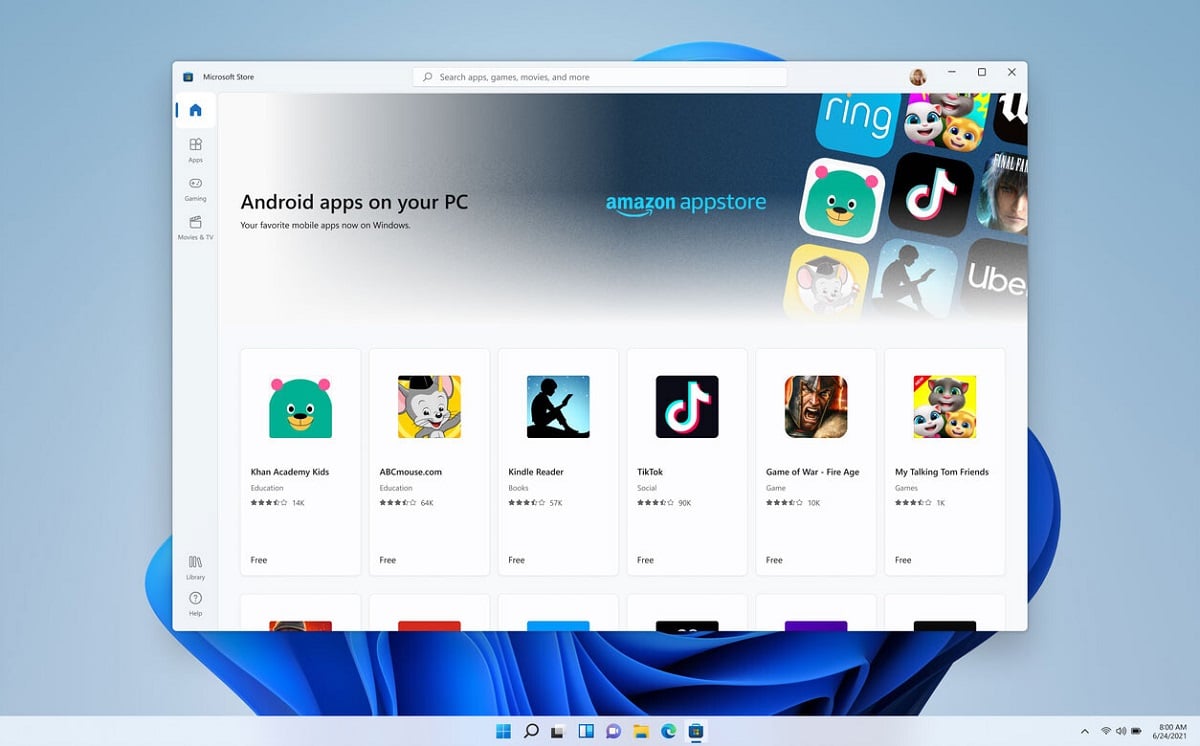
Android application integration in Windows 11
Windows 11 offers native support for Android apps for ourselves thanks to the Intel Bridge technology. Even if it's Intel technology, AMD users should also be able to run Android apps smoothly.
Since Microsoft has partnered with Amazon for the delivery of applications, as long as our computer is compatible, we can download and run apps from the Amazon App Store. This is a completely new feature. In Windows 10, users had to rely on Android emulators to run applications. This will be overcome with Windows 11, although compatibility issues remain to be seen.
Games
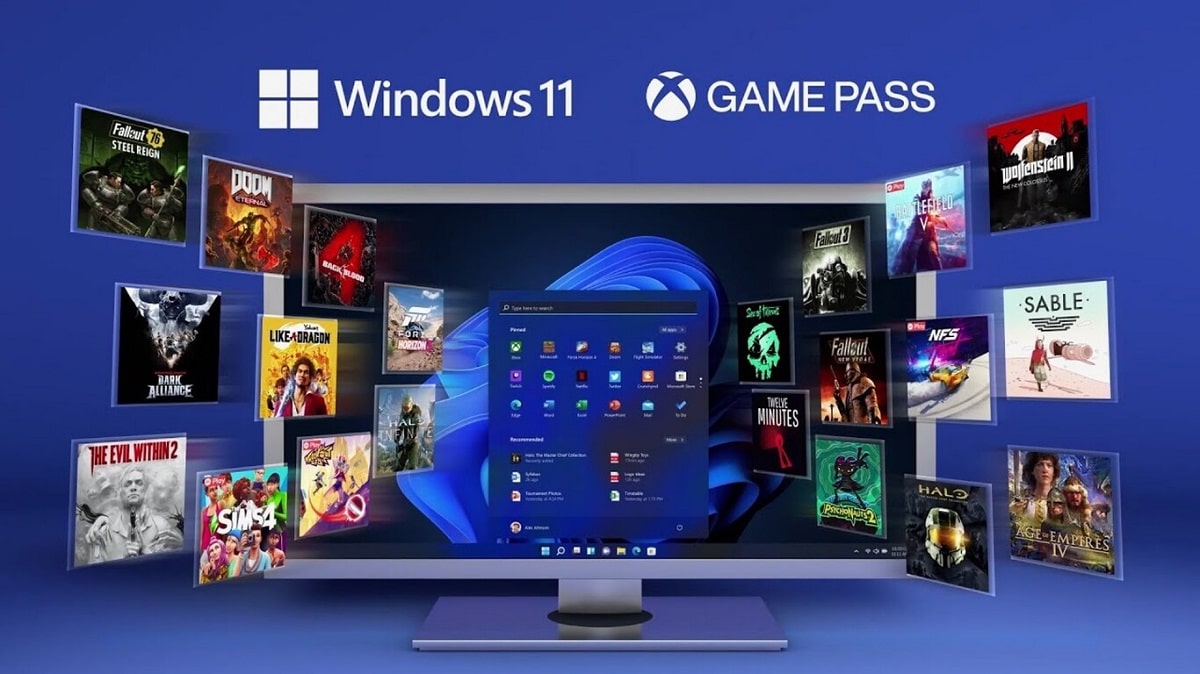
Xbox Game Pass for Windows 11
Attention Gamers: Windows 11 incorporates many features from the latest Xbox Series X to give gamers the best possible experience. For instance, Direct Storage makes games load faster from NVMe SSDs. On the other hand, AutoHDR allows you to add HDR enhancements to games that are based on DirectX 11 or higher.
However, the most interesting improvement is the introduction of Xbox Game Pass, to play new titles from Xbox Game Studios and Bethesda. That means having access to more than 100 different games.
Conclusion
Windows 10 vs Windows 11. Is it a notable improvement to the operating system? Is it worth the jump from one version to another? The answer is yes, as long as our computer meets the hardware requirements, it is a great idea to install Windows 11.
However, it is also convenient to know that it is very likely that this change can generate some other compatibility problem with older hardware and software items. Something that, on the other hand, can always happen when you go from an old version to a new one. You also have to trust the work of Microsoft developers, who in their day fixed the vast majority of the errors present in the launch of Windows 10.
Therefore, the wisest thing to do migrate from Windows 10 to Windows 11, is to wait a bit. Not much, just a few weeks, maybe months. After a reasonable period of time, most of the initial problems will most likely be solved.